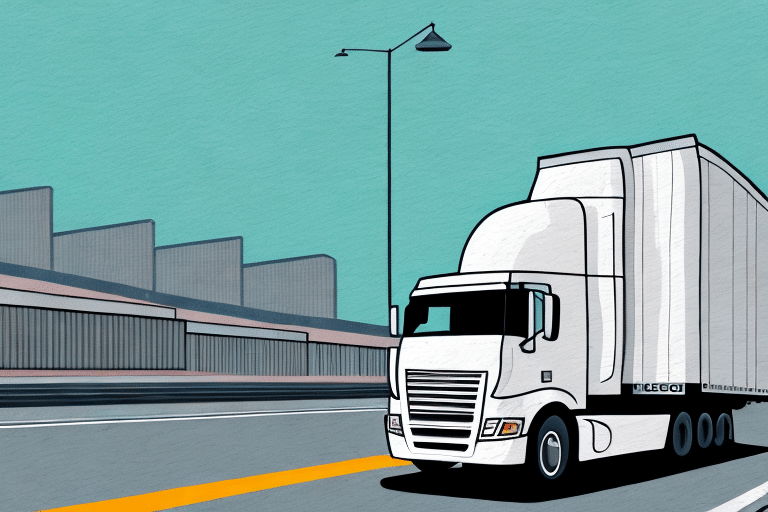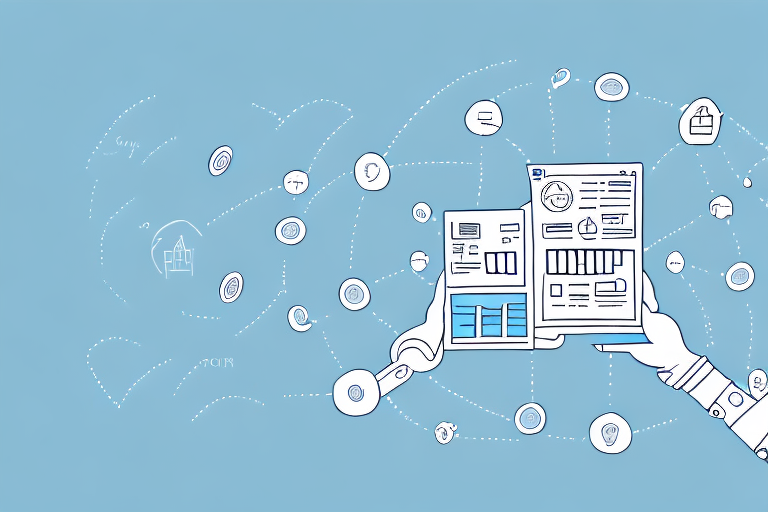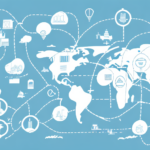What Is Logistics? An Overview of the Logistics Industry
Logistics refers to the process of planning, implementing, and controlling the movement of goods and services from the point of origin to the point of consumption. It is a vital component of supply chain management, ensuring that products are available to customers when and where they need them. This article provides a comprehensive overview of the logistics industry, exploring its role in supply chain management, historical evolution, types of services offered, significance in e-commerce, key challenges, future trends, and best practices.
The Role of Logistics in Supply Chain Management
Importance of Logistics in the Supply Chain
Logistics is integral to supply chain management, coordinating the flow of goods, information, and finances. Effective logistics ensures that products are delivered on time, in the right condition, and at optimal costs, enhancing overall supply chain efficiency.
Benefits of Effective Logistics Management
- Cost Reduction: Optimizing transportation routes and modes can significantly reduce costs. According to a Supply Chain Management review, efficient logistics can lower operational expenses by up to 20%.
- Improved Customer Satisfaction: Timely and reliable deliveries enhance customer satisfaction and loyalty.
- Increased Profitability: Streamlined logistics operations contribute to higher profitability by reducing waste and increasing efficiency.
Globalization and Its Impact on Logistics
With the globalization of markets, logistics has become even more crucial. International logistics involves managing cross-border shipments, navigating diverse regulations, and coordinating with global partners. Companies adept at handling international logistics can access new markets and gain a competitive edge. The World Trade Organization highlights that global trade has surged by over 50% in the past decade, underscoring the growing importance of efficient logistics.
The History and Evolution of Logistics
Early Beginnings
The concept of logistics dates back thousands of years, primarily used in military operations and trade. Ancient civilizations utilized logistics to transport goods, materials, and armies, laying the foundation for modern logistics practices.
Industrial Revolution and Modern Transportation
The Industrial Revolution marked a significant shift in logistics with the introduction of railways, steamships, and later, automobiles and airplanes. These advancements facilitated faster and more efficient movement of goods, transforming logistics into a critical component of the global economy.
The Rise of E-commerce and Modern Logistics
The advent of the internet and e-commerce giants like Amazon has revolutionized the logistics industry. The demand for rapid, reliable delivery services has led to innovations in warehousing, inventory management, and last-mile delivery solutions. According to Statista, global e-commerce sales are projected to reach $6.54 trillion by 2023, driving significant growth and transformation in the logistics sector.
Types of Logistics Services
Transportation Services
Transportation is the backbone of logistics, involving the movement of goods via road, rail, sea, or air. Efficient transportation management ensures timely deliveries and cost-effective operations.
Warehousing and Inventory Management
Warehousing involves storing goods until they are needed, while inventory management ensures optimal stock levels. Advanced warehouse management systems (WMS) enable real-time tracking and efficient handling of inventory.
Customs Clearance and Freight Forwarding
International logistics requires navigating customs regulations and facilitating the clearance process. Freight forwarding services handle the complexities of cross-border shipping, ensuring compliance and smooth transit of goods.
Value-Added Services
Logistics companies offer additional services such as packaging, labeling, and kitting to enhance the value of their offerings. These services streamline the supply chain and meet specific customer requirements.
Logistics in the Digital Age
Impact of E-commerce on Logistics
The explosion of e-commerce has reshaped the logistics landscape, emphasizing the need for efficient order fulfillment, rapid delivery, and robust return management systems. The eMarketer report indicates that e-commerce sales will account for nearly 22% of all retail sales worldwide by 2023.
Technological Innovations in Logistics
Technology plays a pivotal role in modern logistics, with advancements such as artificial intelligence (AI), blockchain, and the Internet of Things (IoT) driving efficiency and transparency. These technologies facilitate real-time tracking, predictive analytics, and enhanced decision-making.
Role of Automation and Robotics
Automation and robotics have revolutionized warehousing and distribution centers, increasing speed and accuracy while reducing labor costs. Automated guided vehicles (AGVs) and robotic picking systems are becoming standard in large logistics operations.
The Future of Last-Mile Delivery
Last-mile delivery remains one of the most challenging aspects of logistics. Innovations like drone delivery, autonomous vehicles, and crowd-sourced delivery platforms are being explored to enhance efficiency and reduce costs. A study by McKinsey & Company predicts that automation could reduce last-mile delivery costs by up to 40% in the next decade.
Challenges Facing the Logistics Industry
Rising Fuel Costs
Fluctuating fuel prices significantly impact transportation costs. Logistics companies must adopt fuel-efficient practices and explore alternative energy sources to mitigate these expenses.
Labor Shortages
The logistics industry faces a persistent labor shortage, particularly in roles like truck driving and warehouse operations. Investing in training programs and improving working conditions are essential to attracting and retaining talent.
Environmental Regulations
Increasing environmental regulations require logistics companies to adopt sustainable practices. Compliance with emissions standards and investment in green technologies are becoming imperative.
Adapting to E-commerce Growth
The rapid growth of e-commerce demands scalable logistics solutions capable of handling high volumes of small, individual orders. This necessitates investments in technology and infrastructure to maintain efficiency and customer satisfaction.
Future Trends and Predictions
Use of Drones for Delivery
Drones offer a promising solution for last-mile delivery, especially in remote or congested areas. Companies like UPS and Amazon are actively testing drone delivery systems, anticipating broader adoption in the near future.
Artificial Intelligence and Machine Learning
AI and machine learning technologies enable predictive analytics, route optimization, and enhanced decision-making. These technologies can forecast demand patterns, optimize inventory levels, and improve overall operational efficiency.
Sustainability and Green Logistics
There is a growing emphasis on sustainability within the logistics industry. Initiatives such as using electric vehicles, optimizing routes to reduce emissions, and implementing circular supply chain practices are gaining traction.
Increased Collaboration and Partnerships
Collaboration between logistics providers, technology firms, and other stakeholders is essential for innovation and efficiency. Strategic partnerships can lead to the development of comprehensive logistics solutions and enhance service offerings.
Best Practices and Key Metrics
Best Practices for Managing Logistics Operations
- Clear Understanding of Customer Requirements: Tailoring logistics solutions to meet specific customer needs ensures satisfaction and loyalty.
- Strong Supplier Relationships: Building robust relationships with suppliers enhances reliability and efficiency in the supply chain.
- Robust Inventory Management Systems: Implementing advanced inventory systems minimizes stockouts and overstock situations.
- Leveraging Technology: Utilizing technology for real-time tracking, automation, and data analytics improves operational visibility and efficiency.
Key Performance Indicators (KPIs) in Logistics
Measuring success in logistics operations involves tracking various KPIs, including:
- On-Time Delivery: Percentage of deliveries made on schedule.
- Order Accuracy: Rate of orders delivered without errors.
- Inventory Turnover: Frequency at which inventory is sold and replaced.
- Transportation Costs: Total costs associated with moving goods.
Choosing a Reliable Third-Party Logistics (3PL) Provider
Selecting the right 3PL provider is crucial for business success. A reliable 3PL should have a proven track record, a global transportation network, competitive pricing, and a focus on innovation and technology. Evaluating potential partners based on these criteria ensures seamless integration and efficient logistics operations.
Conclusion
The logistics industry is a foundational element of the global economy, intricately linked to supply chain management, e-commerce, and technological advancement. As the industry continues to evolve, driven by globalization, technological innovations, and changing consumer demands, logistics companies must adapt by embracing sustainable practices, adopting new technologies, and optimizing their operations. By implementing best practices and focusing on efficiency and customer satisfaction, logistics providers can navigate challenges and capitalize on emerging opportunities, ensuring their pivotal role in the economy for years to come.






















